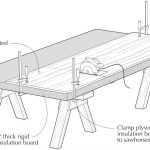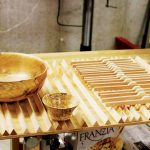We may receive a commission when you use our affiliate links. However, this does not impact our recommendations.
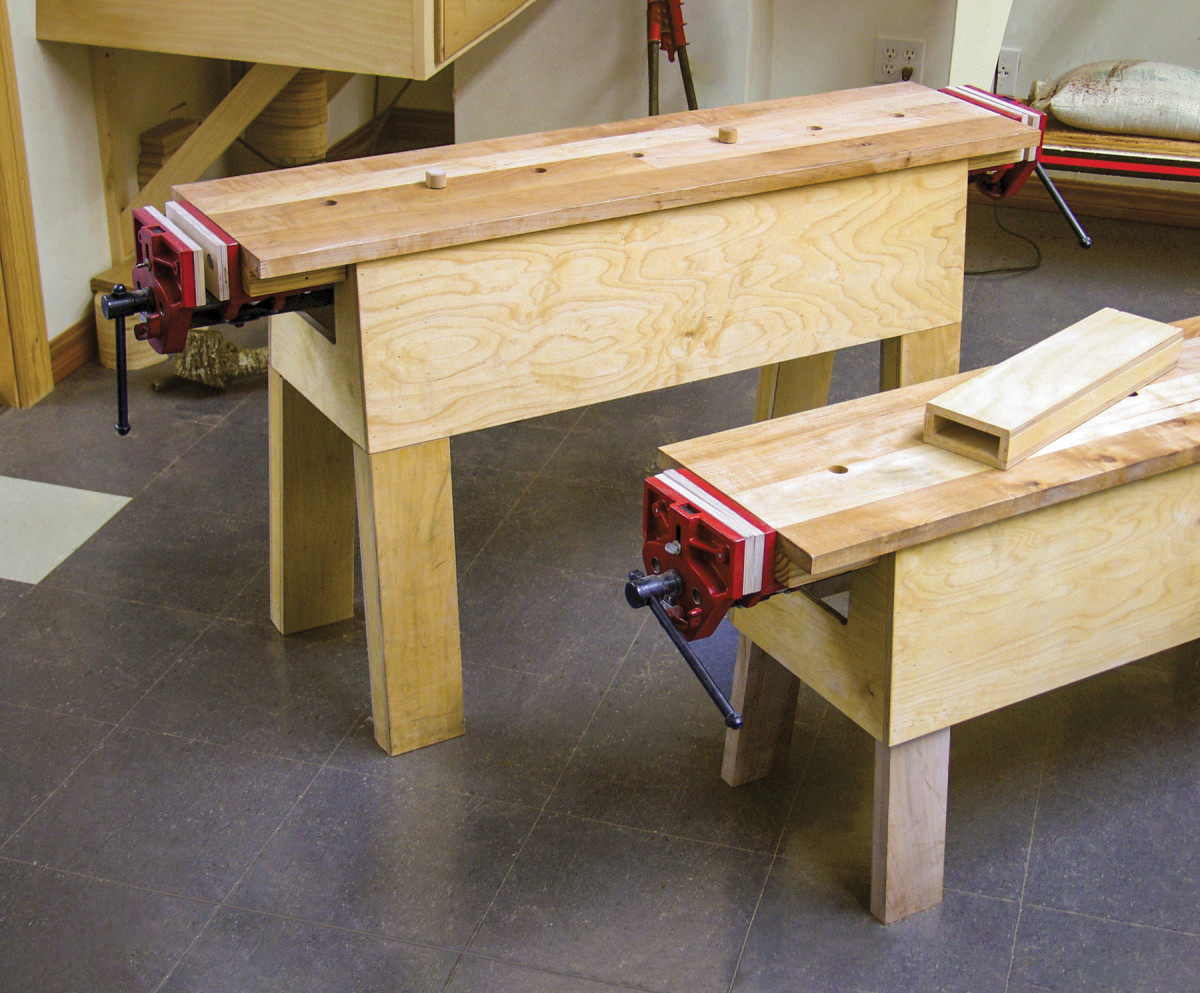
A perfect platform for teaching woodworking to kids.
Woodworking safely with children requires a bench vise to hold stock securely. While stools can raise a child to the height of your workbench, there is nothing safer than having your feet firmly planted on the ground for activities that require physical strength. While most woodworking tools are safe to the hands that hold them, injuries happen to hands left loose with their temptation to hold the wood or otherwise get in the way of sharp edges. A vise allows both hands to be used in holding the tool, or allows the other hand to be put safely behind the back. Either way, the hand most at risk is kept safe.
When we decided to introduce woodworking to elementary school students at the Clear Spring School, the first challenge was to make benches secure and stable enough to enable hand planing and rigorous sawing, that could be easily adjusted for students of different heights, and yet be light enough that they could be moved out of the way during middle- and high school classes. We also wanted benches that could be transported to the elementary school campus or other locations for special events.
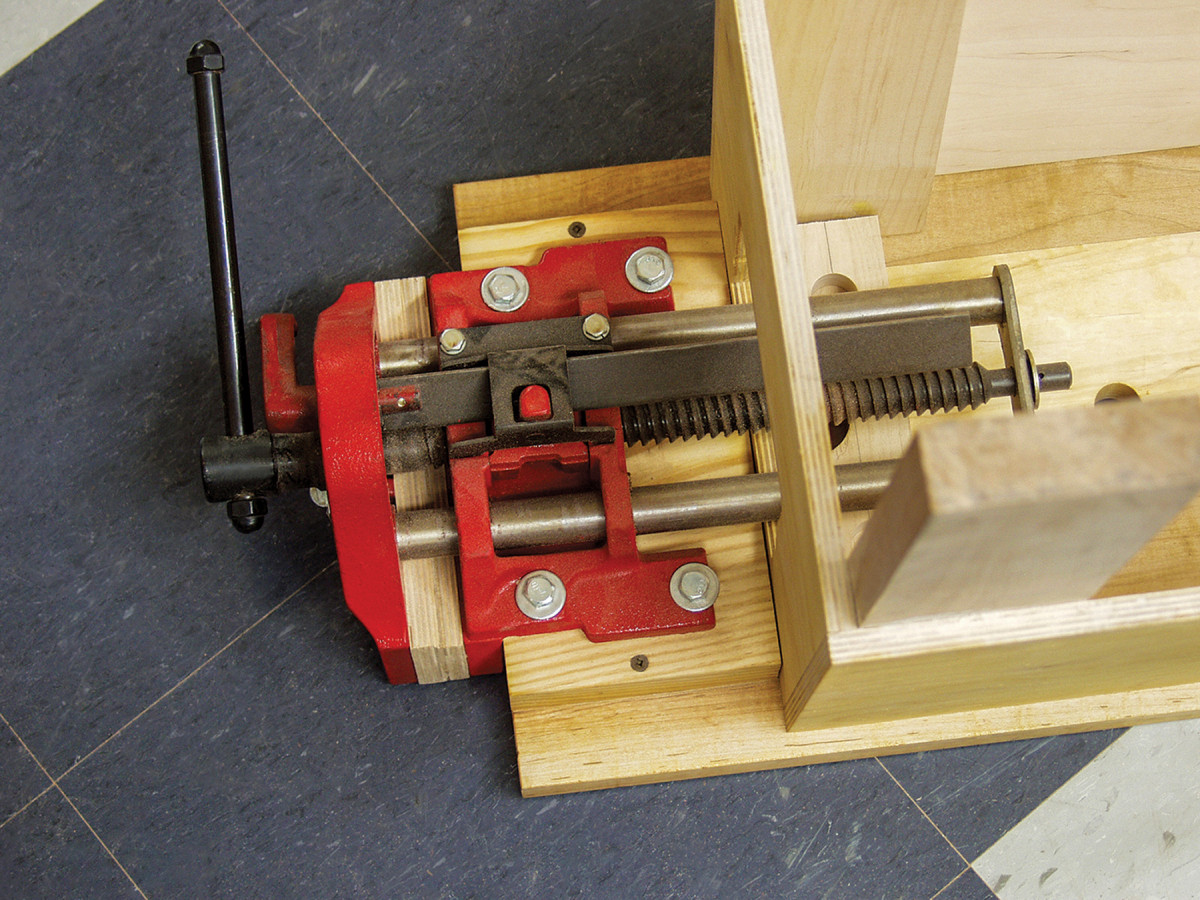
1. Blocking is necessary on the underside to thicken the wood for the vise to sit flush with the benchtop. Note the cutout in the end of the bench frame for the mechanism to move through it.
Larry Williams, an expert in hand planes, helped me design and make these benches for Clear Spring. Based on the sawhorse concept, they have holes for bench dogs and 7“ woodworking vises at each end. To make them adjustable for different working heights, without making the legs at all wobbly, we made “booties” to slip over the regular legs and act as extenders, adding 7 1/4“ in height.
One of my hopes in this design has been that it would be helpful to parents and grandparents interested in sharing their enjoyment of woodworking with their kids. This bench can grow with your child, and later serve as a heavy-duty supercharged sawhorse when your children are grown. We used vises at each end to allow 10 students at a time to work on our five benches. For a single grandchild, a single vise would suffice.
Making the Bench
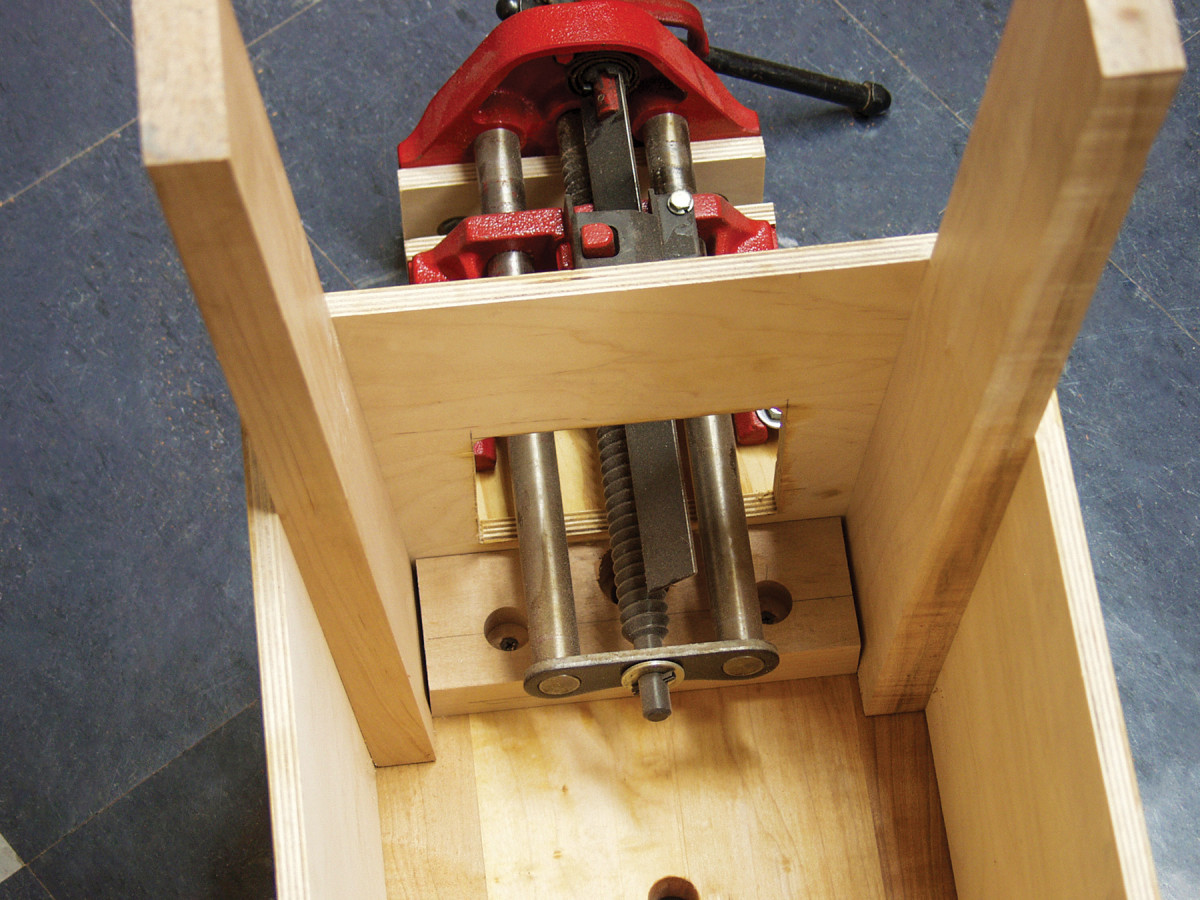
2. Blocks screwed on the underside of the benchtop hold the top in position with the structure of the bench.
We chose 1/2“ Baltic birch plywood for structural panels with soft maple legs and tops. The soft maple had been a gift to the school from a forest products company, so while hard maple might have been preferred, in practice, the soft maple has offered sufficient resistance to wear—and it was free.
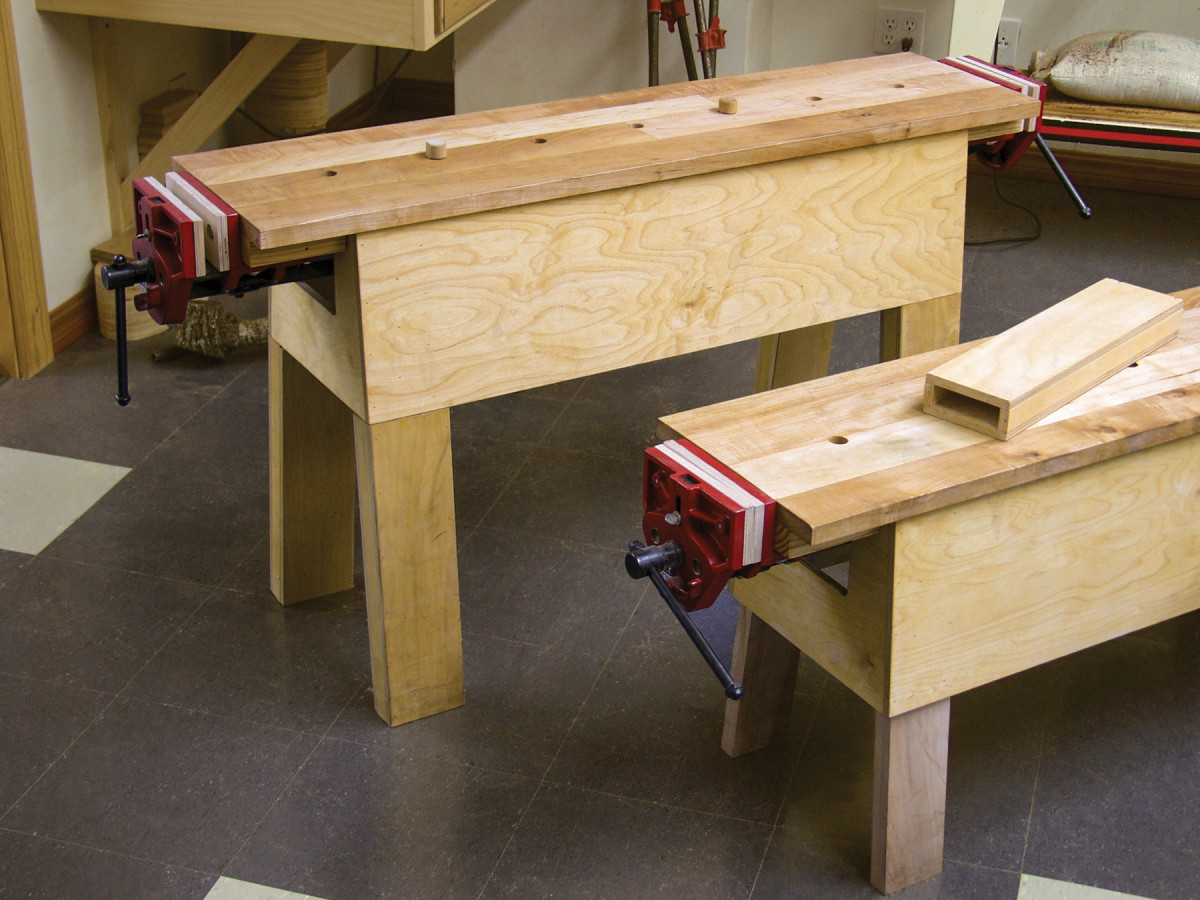
3. Plywood “booties” fit over the bench legs to raise the height for larger children. A vise at each end allows the bench to accommodate two students at a time.
To attach the plywood to the legs, we used glue and an air-powered nail gun with 18-gauge brads. The combination of birch plywood, glue and solid maple provides a very rigid and stable structure, strong enough even for adult use. Additional stock must be glued and screwed to the underside of the top at the ends to bring the vise level with the surface of the benchtop. If making one of these benches, first buy the vise, as the opening at the end to allow for the mechanism to slide may be of different dimensions with different brands of vises.
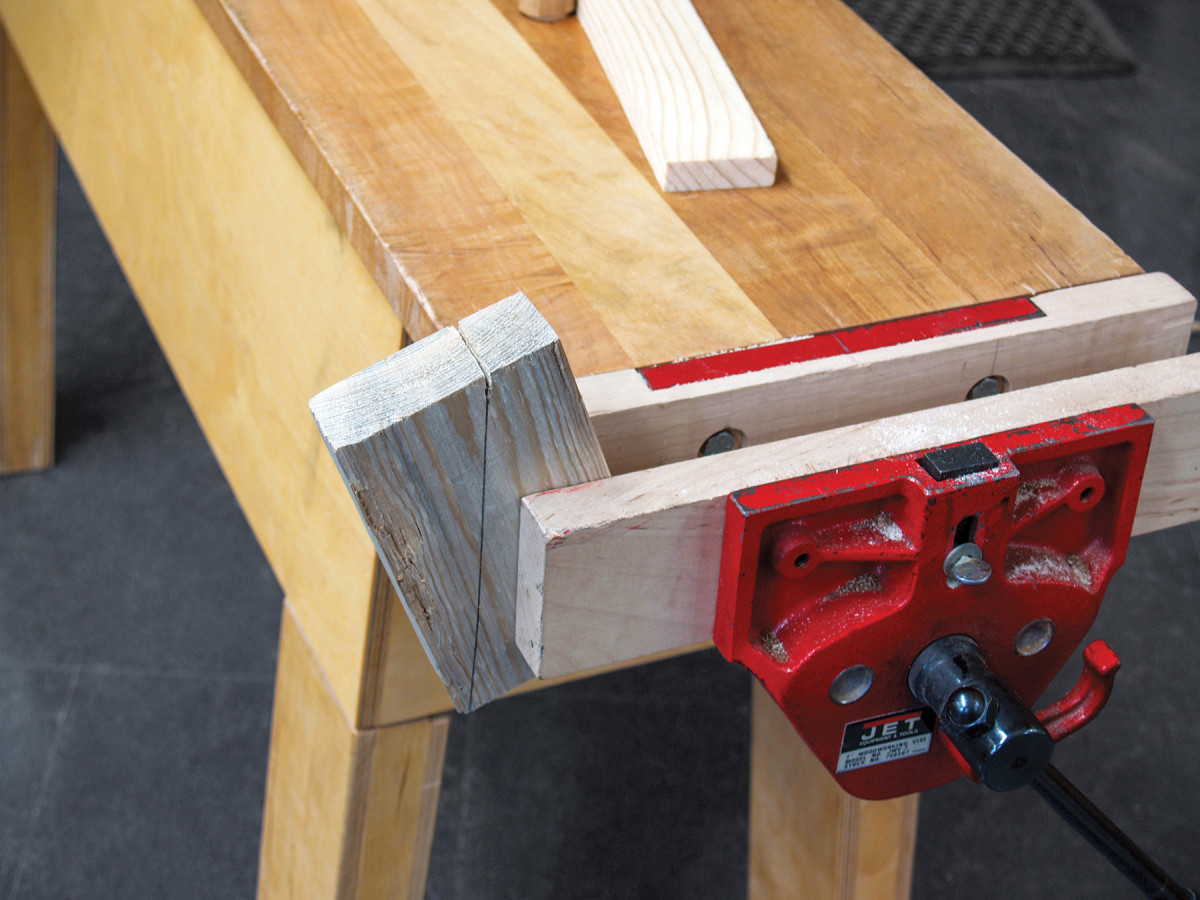
4. Even when the workpiece is tilted for an angled cut, the vise holds it rock solid.
Increase the capacity of the bench by adding extension blocks to the faces of the vise. These are simply bolted to the faces of the vise. In addition to making the vise wider, they also cushion the stock.
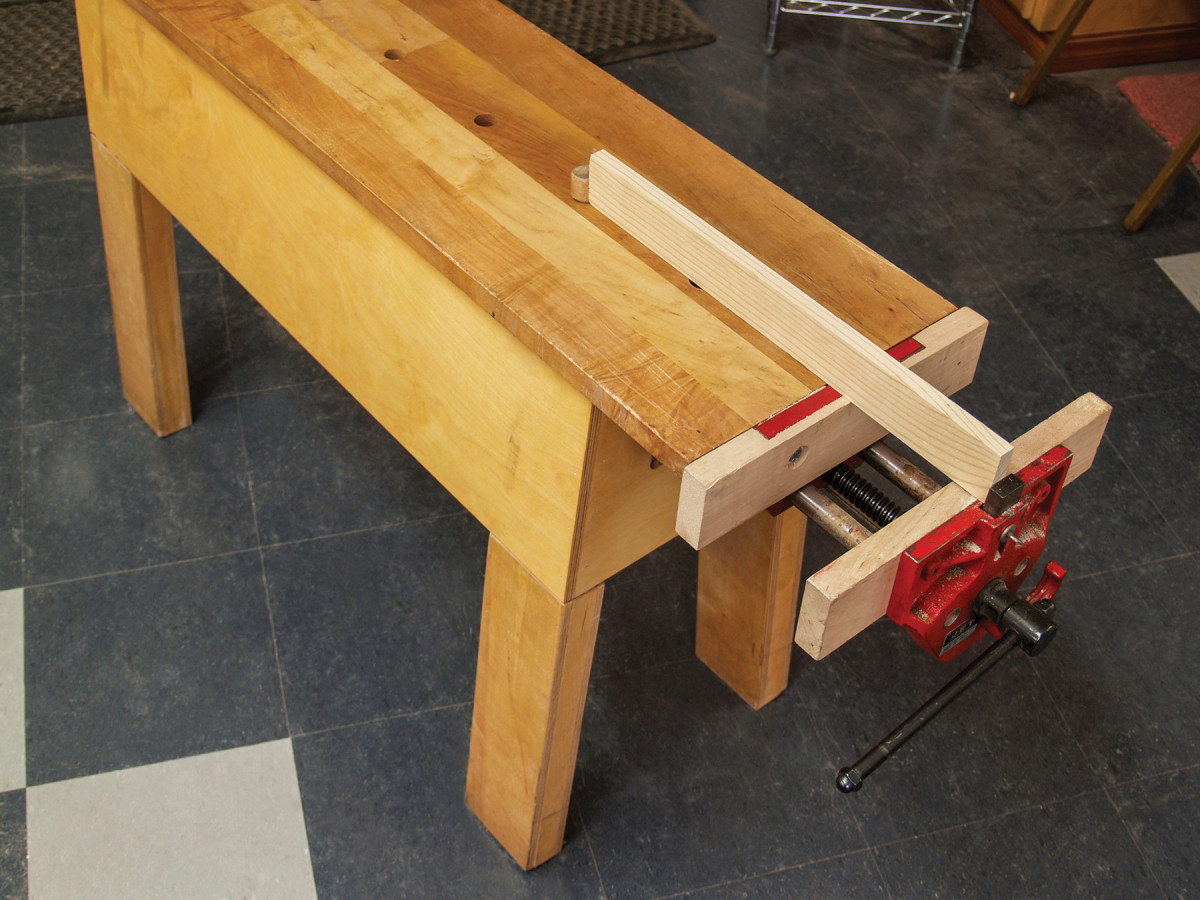
5. A movable wooden dog placed into holes along the benchtop work in concert with the vise’s dog to secure long workpieces.
Another addition involves drilling dog holes in the top. These allow stock to be held between the adjustable dog built into the vise and a wooden dog placed in one of various holes positioned along the length of the benchtop.
You can purchase Doug’s book The Guide to Woodworking with Kids in the Popular Woodworking Store.


Here are some supplies and tools we find essential in our everyday work around the shop. We may receive a commission from sales referred by our links; however, we have carefully selected these products for their usefulness and quality.







